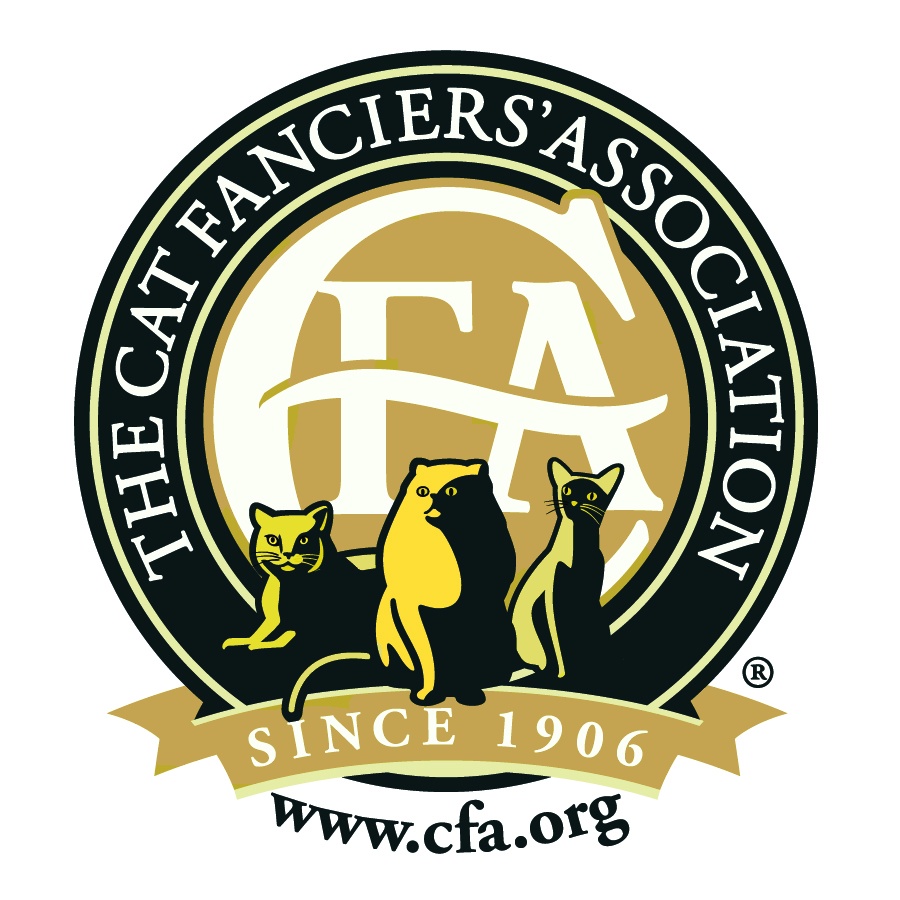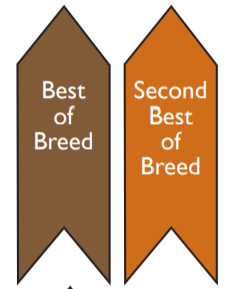
March 30-31, 2019 - Holshauser Building - NC State Fairgrounds


- CFA Show (March 30)
- TICA Show (March 31)
- Welcome
Selkirk Rex Exhibitors! - Feline Agility
- Rescue
- Vendors
- Sponsors
- Showhall information
- Hotel Information
- Come visit our show!
- Contact us
Sunday, March 31, 2019 - hosted by Vision Cat Club (TICA)
| New
to CFA shows? Want to know the basics of CFA judging?
This page should give you a start. If you want to know the
show rules in details, here is a link to the full show rules. First, what does a cat's entry number mean? All entries are listed in numerical sequence by class starting with kittens (longhair then shorthair, championship cats (longhair then shorthair), premiership (altered adult) cats (longhair then shorthair), then household pets. Household pets are listed as all male/neuter houshold pets followed by all female/spay household pets. Within sex household pets are ordered by ascending age. If a cat was entered in the wrong class, and is transfered to the correct class at the show, it will retain it's original entry number. The information provided to the judge about the cat is its:
Judging is a series of eliminations within the class. First all cats of the same breed, color, and sex are judged against the written standard for that breed. Up to 3 cats are selected as the best-3th representation of their class - looking only at cats of that breed, color and sex. The judge awards these cats ribbons with colors indicating their placement.
Note: Judges judge the cats against the whole written standard, not just the color. For example, if there are two male red classic tabby American Shorthairs, the two are judged against how they fit the full written American Shorthair standard. The "first place" does not necessarily mean that that cat has the best red color. Instead, the first place red male American Shorthair best fits the entire written American Shorthair standard including head, structure, coat, etc. Next, the judge looks at all the cats, within the breed, within the same color-class, regardless of sex. Note that the color-class depends on the particular standard for the breed. In many cases it would be the same as color. In other cases multiple colors might be combined together to form the color-class The judge will then rank the cats in the color-class regardless of sex. Up to two awards can be given in a color class. These are indicated by the judge with colored ribbons.  Next, the judge will look at his or her best cats of each color-class and select the top-2 representatives of the breed or division. Most breeds are not separated into divisions unless they have a longhair and shorthair division. The exceptions is the Persian which is divided into multiple color-grouped divisions (for example: Solid, Tabby, Particolor, etc.) Breed awards are designated by the following color ribbons.  In addition, in the championship (unaltered cats 8 months of age and older) and the premiership (spay/neuter cats 8 months of age and older) classes the judge also ranks the cats that are listed in their judge's book as being a CHAMPION or PREMIER. Out of the cats of that breed that are champions (in championship class) and premiers (in premiership class) the judge selects the one cat that is the best representative of the breed as a champion/premier with the following ribbon:  Note: All cats entered in the championship class with the title OPEN or CHAMPION are eligible for best champion and all altered cats entered in the premiership class with the title OPEN or PREMIER are eligible for best premier. Cats entered with a NOVICE title are not eligible for this award. Each household pet reflecting good health and vitality receives a Merit award and can be considered by the judge for a final.
You might also hear calls or discussion of Miscellaneous breed cats or AOV cats. These are breeds working their way towards acceptance for showing or cats with characteristics not currently excepted by an established breed (for example, a color that isn't currently accepted). These cats are brought to the judging ring for evaluation purposes but are not given any awards. The very end of this process is the finals. During the finals the judge names the cats felt the very best representations of their breeds in the class. In most shows 10 finalists are presented in each class. (Very large shows with high entry counts can present more finalists.) Finals can be allbreed or specialty. Allbreed finalist are the cats the judge feels are the very best of both the longhair and shorthair cats for that class. Specialty finals only take the longhairs or shorthairs of the class into consideration. For example, an allbreed kitten final may have both longhair and shorthair kittens in it. A shorthair specialty kitten final would only have shorthair kittens. The exception to the allbreed/specialty rule is the household pet class. All rings, be they allbreed or specialty, will do a final possibly including both longhair and shorthair household pets In addition to the top-10 placements, in the championship rin the judge will present their top-3 champions and top-2 premiers. In a championship allbreed ring this means 9 additional finals (top-3 longhair, top-3 shorthair, and top-3 allbreed). In specialty finals the top-three of that specialy (top-3 longhair champions or top 3 shorthair champions) are presented. In a premiership ring the top-2 premiers are presented - (top-2 longhair, top-2, shorthair, and top-2 allbreed in an allbreed ring and just the appropriate top-2 longhair or shorthair in a specialty ring). IMPORTANT: In CFA the clerks announce the numbers of the finalists.So, listen for your entry number when the final is called. You may, of course, go to the ring to double-check if your number is posted to make sure. VERY IMPORTANT: A cat must be present in the ring during the final to be awarded the final. Any cat that is not present in the ring during the final will forfeit the final and the judge will select a different cat to final instead. This is why it is critical to not leave before all your finals are over for the day - or be out of the showhall (without someone listening for you) during the show. All cats in the final must be in judging cages during the final. Because of this finals might be done in "multiple parts". Frequently asked questions ... "My cat has longhair (shorthair) but is being judged as a shorthair (longhair). What's up with that?"In CFA breeds/related breeds with a different coat length are judged in the class of their "parental" breed. So, for example:
|

